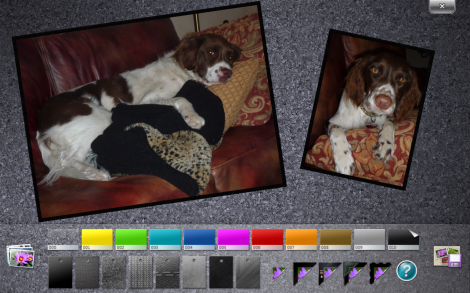Hands on with the Windows 7 Touch Pack

Last month I had a chance to see a quick demo of Microsoft’s new Touch Pack for Windows 7. This collection of a half-dozen multi-touch-enabled programs won’t be available for download by Windows buyers. Instead, Microsoft plans to allow PC makers to load it on touch-enabled PCs that pass Microsoft’s logo testing. The idea is to provide a suite of fun and interesting applications that show off the capabilities of touch-screen PCs.
Yesterday I finally got a chance to try this for myself. A copy of the Touch Pack software arrived in a plain brown wrapper on a USB flash drive. I installed it on a Dell Latitude XT running a recent build of Windows 7, using N-Trig’s latest multi-touch drivers.
The installation routine was a little unusual. Instead of a conventional setup program, the Touch Pack uses a Windows command script, which also installs the XNA Framework and a copy of Microsoft’s Virtual Earth 3D (recently renamed Bing Maps for Enterprise, which pretty much took all the fun out of it). All in all, it took about 350 MB of disk space.
The package includes three games, all designed for Microsoft by Fuel Games: Microsoft Garden Pond requires you to move paper boats on the surface of a serene Japanese pond by flicking the water with your fingertip. Microsoft Rebound looks like it would be a fun and loud two-player air hockey game, if only I could figure out its rules (alas, none of the help screens are available yet). Microsoft Blackboard was the clear winner for me: a multi-level puzzle game in which you drag objects (girders, fans, and spring-loaded platforms) to move balloons and balls toward goals and away from sharp objects. Is it addictive? Hey, I’m up to level 9, and this post would have been finished two hours ago if I hadn’t gotten stuck on level 6.
The other half of the package consists of three applications that all use the Microsoft Surface brand.
Microsoft Surface Collage does basic photo arranging. You drag photos from a strip along the bottom of the window, resize and rearrange them using multi-touch gestures, add custom backgrounds, and save the results as a file.

Microsoft Surface Globe is probably the single most impressive use of touch technology in the entire package. Built on the Virtual Earth engine, it allows you to spin the globe, pick a country, and then zoom in to street level. I spent a few minutes zooming through downtown San Francisco before heading to the other side of the world for a close-up of Tehran.
Finally, there’s Microsoft Surface Lagoon, an interactive screen saver. On an all-in-one PC with a large screen, it might be fun to poke at the water and watch the fish rush over to investigate the commotion. On the Latitude’s 12-inch screen, the effect falls flat.
Overall, the Touch Pack does a very impressive job of showing off the touch experience. The Latitude XT, with a 1.33 GHz ultra-low-voltage processor, isn’t exactly a speed demon, but touch gestures were smooth and screen redraws were quick In every one of the games and Surface apps.
It’ll be interesting to see which PC makers try to push touch screen PCs this fall when Windows 7 is released. Hopefully, this sample pack will inspire some smart designers and developers.